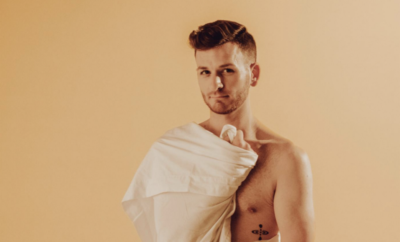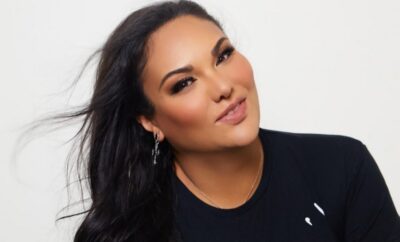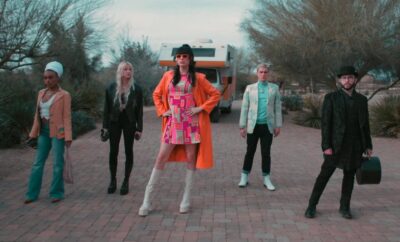
Movie Reviews
Room to Grow
By: Taylor Gates
Room to Grow follows seven children and teenagers in the United States who have recently come out as LGBTQ+. It’s a diverse set of adolescents in every way and each story highlights various struggles that can come into play within different communities. Sexuality, gender, environment, politics, race and religion are all discussed, painting a picture of the broad, modern-day experience of what it can be like to live as an out LGBTQ+ youth.
Matt Alber and Jon Garcia’s simple, straightforward direction makes the film feel earnest, real and relatable. Sure, thirteen-year-old bisexual Savannah recalls meeting Ellen DeGeneres at one point and transgender boy Rylee does get surprised with a meet-and-greet with singer Ruth B., but for the most part, they’re normal kids doing normal things. The film starts off by showing recent high school graduate Chris, a biracial teen with Mexican heritage, talking about attending prom. Isaac, a young gay man who has been out for several years, gets ready to attend a sock hop with his boyfriend. Savannah is a Scottish dancer who loves to be silly with her friends.
Though each story is important and offers a valuable perspective, there are a few natural, memorable highlights that emerge. Maia talking about her experience being an African American pansexual woman is incredibly pertinent, as she eloquently but accessibly shines a light on how there are sexism and racism within the LGBTQ+ community, sexism and homophobia within the African American community and racism and homophobia within feminism, which makes finding her place in the world especially difficult.
Ayden discusses what’s it been like to grow up in a Native American community as a lesbian—a marginalized group notably absent from much of the media. Her voice offers a new and mature viewpoint, giving insight into an underrepresented group.
Rylee not only grapples with his insurance company in order to try and pay for his top surgery as a minor, but he also shares what it was like to transition while being in ROTC. Though he used to want to go into the military, recent comments by the Trump administration make him feel unwelcome, so he is considering becoming a firefighter instead.
In the middle of giving a speech about her sexuality at her Mormon church, Savannah was cut off by one of the leaders. She is still grappling with this and, although she doesn’t attend church there anymore, she is optimistic that the congregation will eventually understand how they are hurting people and update their belief system to make the faith more inclusive.
Room to Grow doesn’t try and stuff things into neat little boxes and isn’t overly concerned with labels, which makes its tone feel like a breath of fresh air on-par with the attitude of many Gen Zers. Keltin’s story, in particular, showcases fluidity. They enjoy playing with ponies and wearing dresses, but doesn’t identify as just male or female. “I’m a little bit of boy and a little bit of girl—not a big deal,” Keltin says.
The documentary explores both highs and lows that can come with being part of the LGBTQ+ community. Some of the families are an accepting safe haven while the surrounding communities are ostracizing; sometimes it’s the opposite where the communities step up and become chosen families when their own relatives are intolerant.
Many of the families depicting in this documentary are warm allies, which makes for uplifting storytelling. However, that’s not always the case. For instance, Keltin heartbreakingly recalls his father forcibly shaking them out of a dress when their father was drunk. Chris’s father says he will no longer be part of their life if they transition, which is why they won’t start the process. Sadly, mental health and depression is a huge factor in many of the stories. Rylee and Isaac both candidly open up about how bullying and body dysmorphia led them to have suicidal thoughts.
Luckily, each story has lighter elements in commons as well. Art tends to be a popular coping mechanism and form of self-expression and almost every kid mentions singing, dancing or drawing being a positive outlet. The pure bravery and wisdom of these young adults shines through every second and they could absolutely be role models for their peers and elders alike.
While the scope is the film’s biggest strength, it can sometimes feel like its biggest weakness, too. Everyone will be able to relate to these kids in some way or another, one can’t help but wish the film was a little longer so that the audience could more deeply delve into each story. The beginning, especially, is a little overwhelming with everyone being introduced up-front before flipping back, leapfrogging from journey-to-journey.
Still the pros absolutely outnumber the cons. This documentary is a must-see for everyone, as it gives a platform to a group that is not to be underestimated. Savannah said it best: “You can take all the time in the world to figure out who you are. You get to share your own story and be your own true self.” Props to Revry for giving this community a powerful chance to do just that.





You must be logged in to post a comment Login